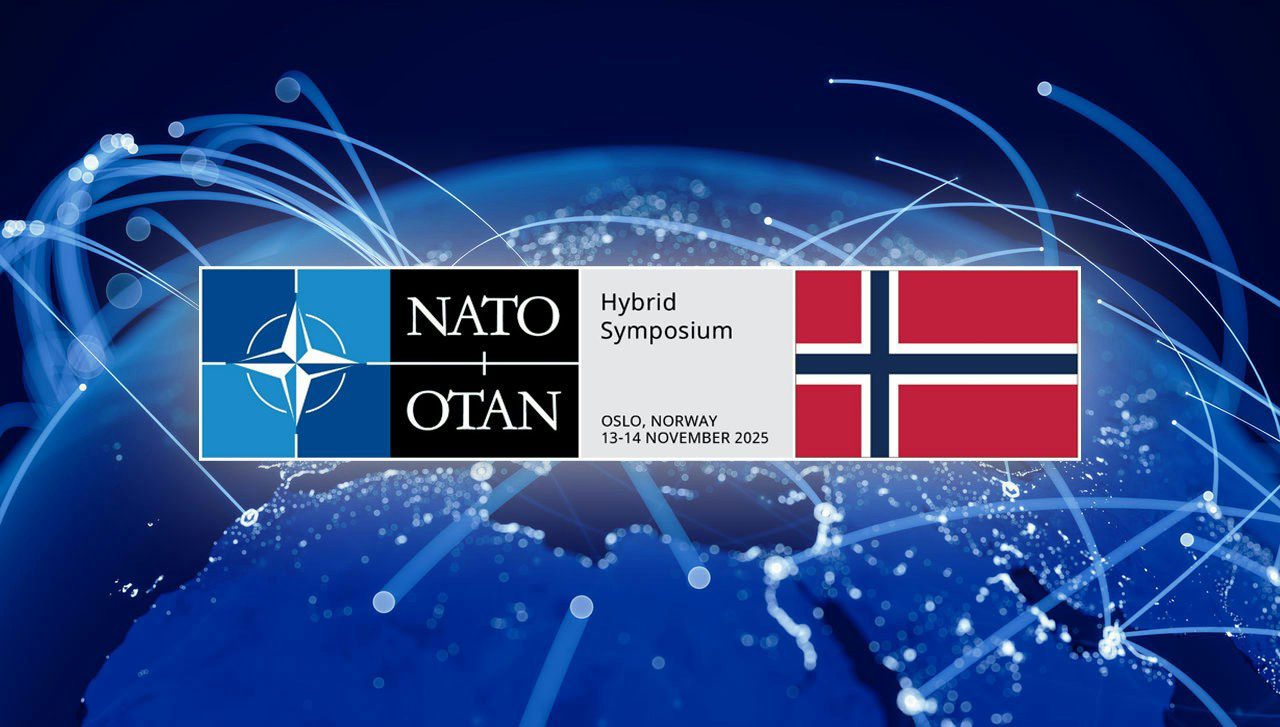Download NATO’s broadcast-quality video content free of charge

Log in
NATO MULTIMEDIA ACCOUNT
Access NATO’s broadcast-quality video content free of charge

Check your inbox and enter verification code
You have successfully created your account
From now on you can download videos from our website
Subscribe to our newsletter
If you would also like to subscribe to the newsletter and receive our latest updates, click on the button below.
Enter the email address you registered with and we will send you a code to reset your password.
Didn't receive a code? Send new Code
The password must be at least 12 characters long, no spaces, include upper/lowercase letters, numbers and symbols.
Your password has been updated
Click the button to return to the page you were on and log in with your new password.
Countering hybrid threats
Updated: 07 May 2024
NATO Allies face threats and challenges from both state and non-state actors who use hybrid activities to target political institutions, influence public opinion and undermine the security of NATO citizens. Hybrid methods of warfare – such as propaganda, deception, sabotage and other non-military tactics – have long been used to destabilise adversaries. What is new about attacks seen in recent years is their speed, scale and intensity, facilitated by rapid technological change and global interconnectivity. NATO has a strategy for its role in countering hybrid warfare and stands ready to defend the Alliance and all Allies against any threat, whether conventional or hybrid.
- The primary responsibility to respond to hybrid threats or attacks rests with the targeted country.
- NATO Allies have strengthened their national resilience, including against hybrid threats, and have improved their ability to understand the hybrid threat picture across the Alliance, particularly the sophisticated hybrid strategies used by the Russian Federation and the People’s Republic of China.
- NATO is prepared to assist any Ally against hybrid threats as part of collective defence. The Alliance has developed a strategy for its role in countering hybrid warfare to help address these threats.
- Since 2016, the Alliance has publicly stated that hybrid actions against one or more Allies could lead to a decision to invoke Article 5 of the North Atlantic Treaty.
- In July 2018, NATO Leaders agreed to set up counter-hybrid support teams, which provide tailored targeted assistance to Allies upon their request, in preparing against and responding to hybrid activities.
- In July 2022, NATO Leaders endorsed comprehensive preventive and response options to counter hybrid threats. These can be tailored to address specific situations.
- NATO is strengthening its coordination with partners, including the European Union, in efforts to counter hybrid threats.
- NATO’s Joint Intelligence and Security Division has a hybrid analysis branch that helps improve situational awareness.
- The Alliance actively counters disinformation and propaganda – not with more propaganda, but with facts – online, on air and in print.
What are the hybrid threats NATO faces?
Hybrid threats combine military and non-military as well as covert and overt means, including disinformation, cyber attacks, economic pressure, deployment of irregular armed groups and use of regular forces. Hybrid methods are used to blur the lines between war and peace, and attempt to sow doubt in the minds of target populations. They aim to destabilise and undermine societies.
The speed, scale and intensity of hybrid threats have increased in recent years. Being prepared to prevent, counter and respond to hybrid attacks, whether by state or non-state actors, is a top priority for NATO.
For example, the Russian Federation uses sophisticated hybrid strategies, including political interference, malicious cyber activities, economic pressure and coercion, subversion, aggression and annexation. Coercive military posture and rhetoric are also used as part of the Russian Federation’s hybrid strategies to pursue its political goals and undermine the rules-based international order.
The People’s Republic of China’s (PRC) malicious hybrid and cyber operations and its confrontational rhetoric and disinformation target Allies and harm Alliance security. For example, the PRC seeks to control key technological and industrial sectors, critical infrastructure, and strategic materials and supply chains. It uses its economic leverage to create strategic dependencies and enhance its influence.
NATO’s strategy: prepare, deter, defend
Since 2015, NATO has had a strategy for its role in countering hybrid warfare. NATO will ensure that the Alliance and Allies are sufficiently prepared to counter hybrid attacks whatever form they may take. It will deter hybrid attacks on the Alliance and, if necessary, will defend Allies concerned.
To be prepared, NATO continuously gathers, shares and assesses information in order to detect and attribute any ongoing hybrid activity. The Joint Intelligence and Security Division at NATO Headquarters improves the Alliance’s understanding and analysis of hybrid threats. The hybrid analysis branch provides decision-makers with improved awareness on possible hybrid threats.
The Alliance supports Allies’ efforts to identify national vulnerabilities and strengthen their own resilience, if requested. NATO also serves as a hub for expertise, providing support to Allies in areas such as civil preparedness and chemical, biological, radiological and nuclear (CBRN) incident response; critical infrastructure protection; strategic communications; protection of civilians; cyber defence; energy security; and counter-terrorism.
Training, exercises and education also play a significant role in preparing to counter hybrid threats. This includes exercising of decision–making processes and joint military and non-military responses in cooperation with other actors.
To deter hybrid threats, NATO is resolved to act promptly, whenever and wherever necessary. It continues to increase the readiness and preparedness of its forces, and has strengthened its decision-making process and its command structure as part of its deterrence and defence posture. This sends a strong signal that the Alliance is improving both its political and military responsiveness and its ability to deploy appropriate forces to the right place at the right time. Furthermore, NATO has expanded its toolbox to counter hybrid threats. Allies have developed comprehensive preventive and response options. These options combine civil and military tools, which can be tailored for responding to specific situations.
If deterrence should fail, NATO stands ready to defend any Ally against any threat. To this end, NATO forces have to be able to react in a quick and agile way, whenever and wherever needed.
Cooperation beyond NATO
NATO cannot counter hybrid threats alone. Cooperation with partners is essential. The Alliance continues to strengthen its cooperation and coordination with such partners as Bosnia and Herzegovina, Georgia, the Republic of Moldova and the European Union (EU), to counter hybrid threats and enhance resilience. As part of their increasingly closer cooperation, NATO and the EU have stepped up their cooperation on dealing with hybrid threats, with a special focus on cyber defence, enhanced resilience, strategic communications, improved situational awareness and exercises. NATO is also engaging with partners in the Indo-Pacific region to exchange experience on national approaches to countering hybrid threats, such as increased incidence of disinformation and cyber attacks. This was particularly valuable in the context of the COVID-19 pandemic.
NATO has also cooperated with Ukraine to counter hybrid threats, both before Russia’s invasion and since. The NATO-Ukraine Platform on Countering Hybrid Warfare was established at the NATO Summit in Warsaw in July 2016. It provides a mechanism to better identify hybrid threats and to build capacity in mitigating vulnerabilities and strengthening resilience of the state and society. The Platform has supported research, training and expert consultations, with a focus on lessons learned, countering disinformation and enhancing resilience.
In addition to cooperation with specific partners, Centres of Excellence work alongside and contribute knowledge and expertise to the Alliance. These are international research centres that are nationally or multi-nationally funded and staffed.
The European Centre of Excellence for Countering Hybrid Threats located in Helsinki, Finland serves as a hub of expertise, assisting participating countries in improving their civil-military capabilities, resilience and preparedness to counter hybrid threats. It was inaugurated in October 2017 by NATO Secretary General Jens Stoltenberg, together with EU High Representative for Foreign Affairs and Security Policy/Vice-President of the European Commission Federica Mogherini. The Centre is an initiative of the Government of Finland, supported by 32 other countries, as well as NATO and the EU.
Other Centres of Excellence contribute to NATO’s efforts to counter hybrid threats, including the Strategic Communications Centre of Excellence in Riga, Latvia; the Cooperative Cyber Defence Centre of Excellence in Tallinn, Estonia; and the Energy Security Centre of Excellence in Vilnius, Lithuania.
The Alliance also works with Partnership Training and Education Centres – including the Naval Postgraduate School in Monterey, California, USA – on countering hybrid threats.






